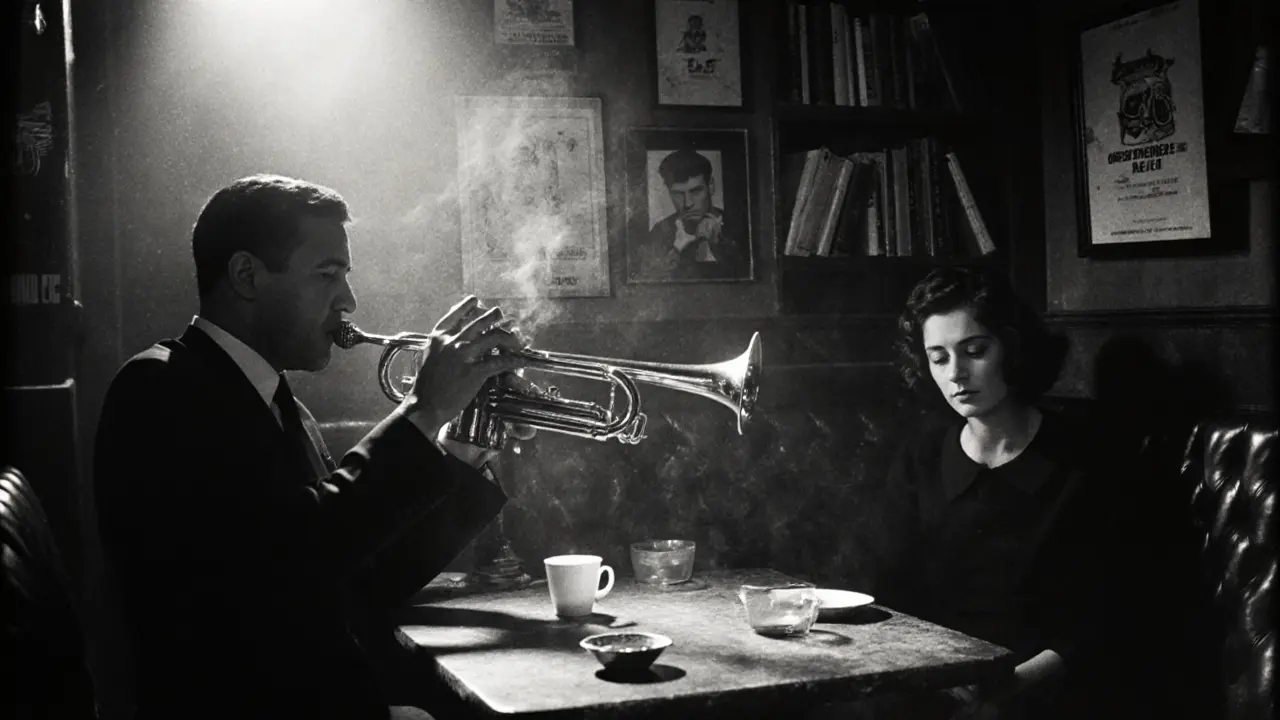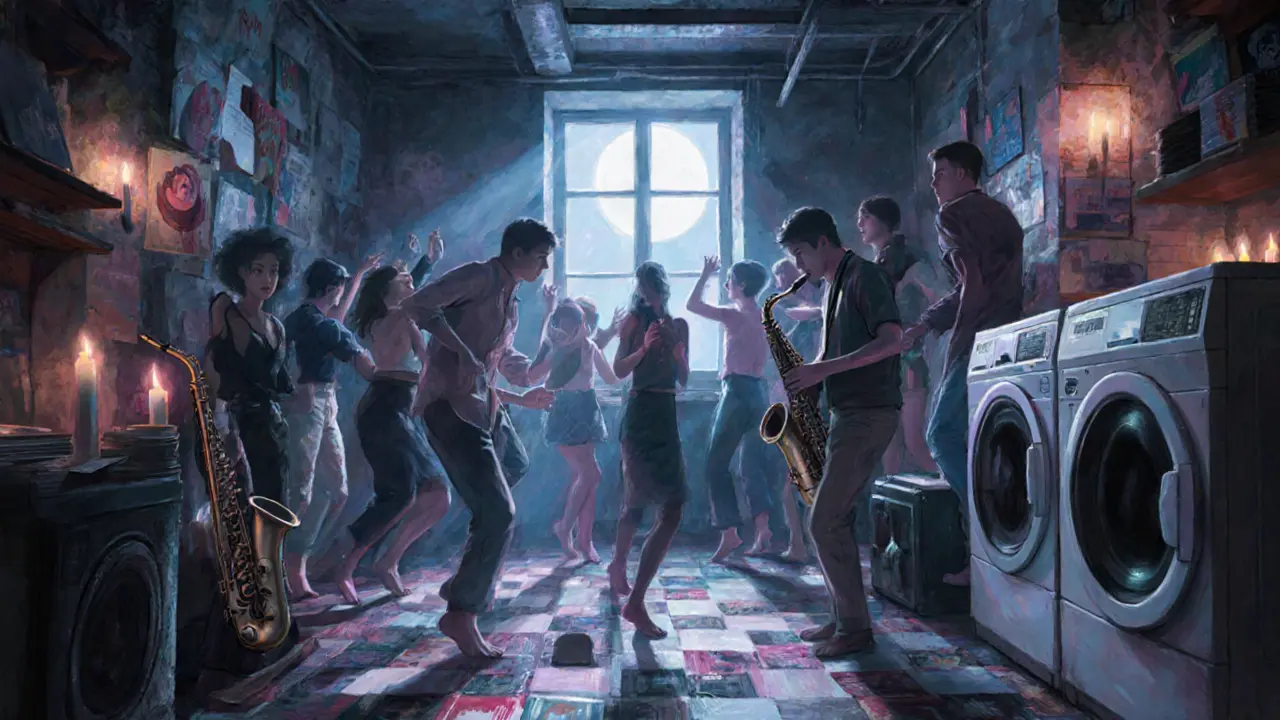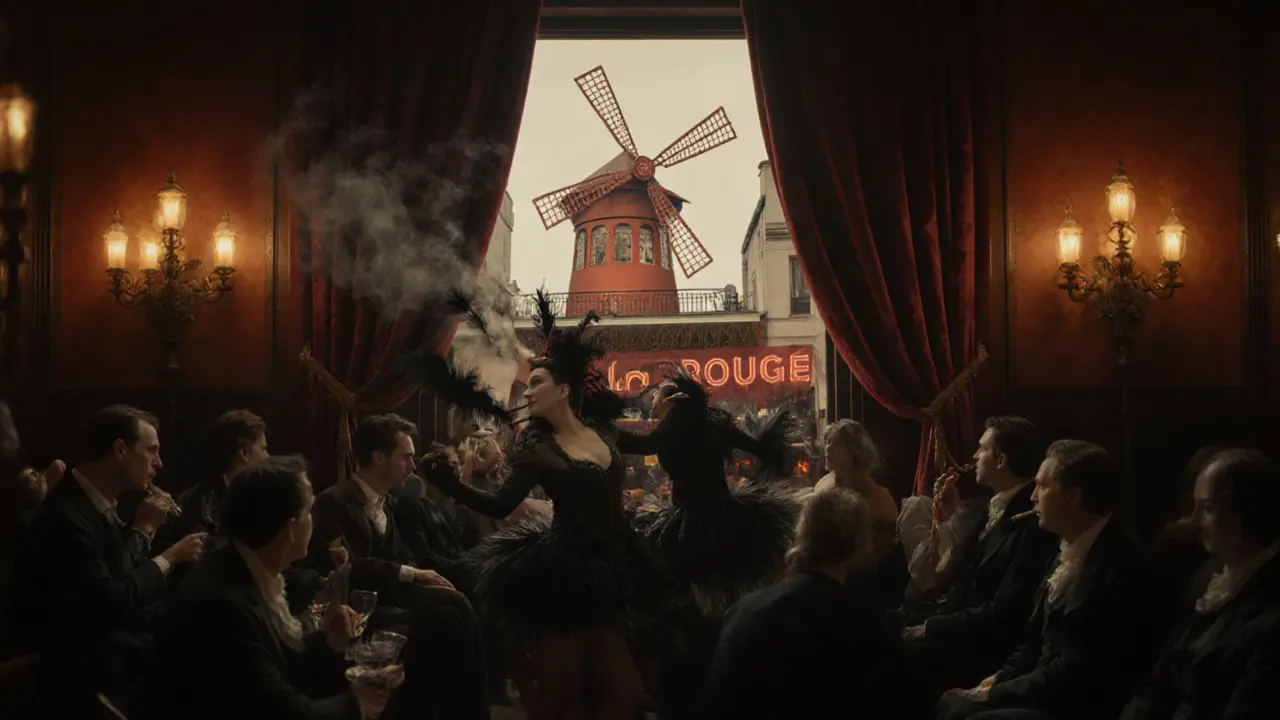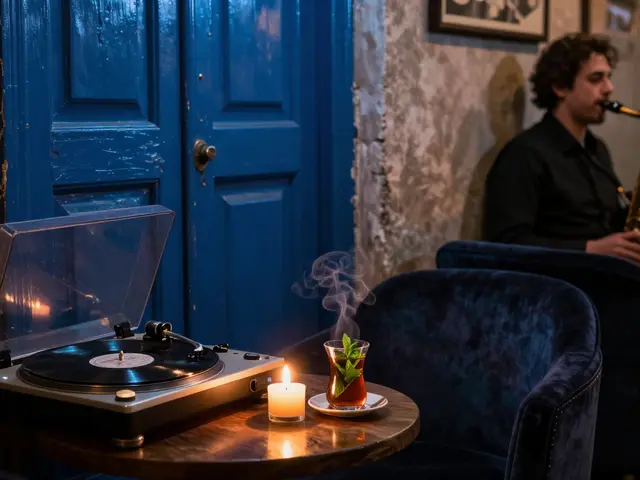From Classic to Cutting-Edge: The Evolution of Nightlife in Paris
Paris didn’t become the city of lights by accident. It happened because people kept showing up after dark-not just for dinner, but for something deeper. Music, conversation, movement, secrets. The kind of energy that doesn’t fade with the sunset. Today, Paris nightlife is a patchwork of old wine cellars turned jazz lounges, rooftop bars with views of the Eiffel Tower, and underground techno spots hidden behind unmarked doors. But it wasn’t always this way. The rhythm of Paris after midnight has changed, again and again, shaped by war, revolution, fashion, and the simple human need to come alive when the sun goes down.
The Belle Époque and the Birth of the Night
In the late 1800s, Paris was the place to be after dark. The invention of electric streetlights turned the city into a glowing stage. Montmartre became the heart of it all. Cabarets like the Moulin Rouge didn’t just sell drinks-they sold fantasy. Can-can dancers in feathered skirts, clowns, acrobats, and poets in velvet jackets all shared the same dim, smoky air. This wasn’t just entertainment. It was rebellion. The working class, artists, and free thinkers flocked here to escape the rigid rules of daytime society. The music was raw, the laughter loud, and the rules nonexistent. This was the first true Parisian nightlife: raw, unfiltered, and electric.
By 1900, cafés like Le Lapin Agile and La Maison Rose weren’t just places to sip coffee. They were where Picasso sketched, Apollinaire recited poetry, and Zelda Fitzgerald danced on tables. The night belonged to those who dared to be different. And that spirit? It never really left.
Post-War Jazz and the American Influence
After World War II, Paris didn’t just recover-it reinvented itself. American jazz musicians, fleeing segregation in the U.S., found a home in Paris. Sidney Bechet, Duke Ellington, and later Miles Davis played in basements and small clubs where the audience didn’t care about skin color-they cared about the sound. The Saint-Germain-des-Prés district became the new epicenter. Le Tabou, a tiny club on Rue Dauphine, was where the intellectuals gathered. Jean-Paul Sartre and Simone de Beauvoir sat in the back, sipping absinthe, debating philosophy while Chet Baker played trumpet just feet away.
This wasn’t partying. It was thinking with your feet. The music was slow, smoky, intimate. People came not to dance wildly, but to feel something real. The jazz clubs of this era didn’t have VIP sections or bottle service. They had leather booths, cigarette smoke curling under the lights, and the kind of silence that only follows a perfect solo.
The 1980s and the Rise of the Club Scene
By the 1980s, Paris was ready for something louder. Disco had faded, but new rhythms were arriving from New York, London, and Berlin. The city’s first real dance clubs opened in abandoned warehouses near the Canal Saint-Martin. Le Palace, once a grand theater, became a glittering, neon-drenched playground for the elite and the avant-garde. Madonna showed up. David Bowie played. The crowd wore leather, lace, and enough makeup to blind a streetlamp.
This was the birth of the Parisian club culture as we recognize it today: loud, flashy, and obsessed with image. But it wasn’t just about fashion. It was about identity. For the LGBTQ+ community, these clubs were safe havens. For artists and misfits, they were laboratories. The music shifted from disco to house, then to techno. The rules? No rules. The only requirement? Be yourself, even if that meant dressing like a cyborg.

The 2000s: Commercialization and the Loss of Edge
By the early 2000s, Paris nightlife started to feel… predictable. Chains like L’Enfer and Le Baron opened, promising exclusivity with velvet ropes and bouncers who checked your shoes before letting you in. The music became more polished, the crowds more curated. Nightlife turned into a status symbol. If you weren’t on the list, you weren’t real. The underground spots that once thrived on secrecy began to close, priced out by rising rents and tourist demand.
For locals, it felt like the soul of the night was being sold off. The jazz clubs vanished. The poetry readings moved online. The real Parisians-those who remembered the smell of wet cobblestones after midnight-started staying home.
The 2020s: A Quiet Rebellion
Then came the pandemic. Clubs shut down. Bars turned into ghost towns. People thought Paris nightlife was dead. They were wrong.
When the city reopened, something unexpected happened. People didn’t rush back to the same crowded clubs. They looked for something quieter, stranger, more meaningful. A new wave of spaces emerged. In the 11th arrondissement, you’ll find Le Baron-but not the one from the 2000s. This version is smaller, louder, and run by musicians who actually play live. In Belleville, a former laundry turned into a basement club called La Machine du Moulin, where the DJ spins only vinyl from the 1970s and the crowd is mostly locals under 30. No bouncers. No dress code. Just sound, sweat, and silence between tracks.
There’s also a boom in late-night cultural spaces. The Palais de Tokyo hosts midnight art openings with live electronic sets. The Opéra-Comique now offers silent disco performances in its gardens. Even the Latin Quarter has returned to its roots: small bars with live accordion music, wine poured by the glass, and no one checking your ID unless you’re clearly underage.
The most telling sign? In 2024, a survey by the Paris City Council found that 68% of locals under 35 prefer “authentic, unadvertised” nightlife spots over branded clubs. They don’t want to be seen. They want to feel something.

What Makes Paris Nightlife Different Today?
It’s not about the music. It’s not even about the location. It’s about the permission to be alone together.
In London, you go out to be seen. In New York, you go out to network. In Berlin, you go out to lose yourself. In Paris, you go out to remember who you are.
That’s why you’ll find a 70-year-old jazz pianist playing in a backroom of a bookshop in Le Marais at 2 a.m., surrounded by students who’ve never heard of him. That’s why a group of strangers will sit in silence on a rooftop in Montparnasse, watching the moonlight hit the Seine, while a DJ plays a track no one can name.
Paris nightlife today isn’t about trends. It’s about time. Time to breathe. Time to listen. Time to dance without a camera.
Where to Find the Real Paris Nightlife in 2025
- Le Trabendo (19th arrondissement): A converted train station turned live music venue. No VIP. No cover charge before 11 p.m. Local bands, experimental sounds, and a crowd that’s been coming here since 1998.
- La Gaité Lyrique (3rd arrondissement): A cultural center that turns into a club after midnight on weekends. Think techno meets French chanson. It’s weird. It’s wonderful.
- Bar du Marché (10th arrondissement): A tiny wine bar that opens at 9 p.m. and closes when the last person leaves. The owner pours natural wines from small farms and never asks for your name.
- La Bellevilloise (20th arrondissement): A former workers’ club turned cultural hub. Friday nights are for underground hip-hop. Saturday nights are for electronic sets with no lights, just candles.
- Le Comptoir Général (10th arrondissement): A jungle-themed bar with books, vinyl, and a rooftop garden. It’s not a club. It’s a feeling.
These places don’t advertise on Instagram. You find them by asking someone who’s been here for years. Or by wandering after midnight and following the sound of a saxophone.
Why Paris Nightlife Will Never Die
It’s not about money. It’s not about fame. It’s about memory.
Paris has seen empires rise and fall. It’s been occupied, bombed, and rebuilt. But every time, the night came back. Not because someone planned it. But because people needed it.
The jazz clubs of Saint-Germain, the punk basements of the 80s, the silent disco under the Eiffel Tower-these aren’t just venues. They’re acts of resistance. A way to say: even when the world feels broken, we can still come together in the dark and make something beautiful.
That’s the real evolution of Paris nightlife. Not from old to new. But from loud to quiet. From show to soul.
Is Paris nightlife safe at night?
Yes, most areas popular with nightlife are safe, especially in tourist-friendly districts like Le Marais, Saint-Germain, and Montmartre. Stick to well-lit streets, avoid isolated alleys after 2 a.m., and trust your gut. The biggest risk isn’t crime-it’s getting lost. Parisian streets twist and turn. If you’re unsure, take a taxi or use a trusted ride app. Most bars close by 3 a.m., and the metro runs until 2 a.m. on weekdays and 2:30 a.m. on weekends.
Do I need to dress up to go out in Paris?
Not anymore. In the 2000s, some clubs enforced strict dress codes-no sneakers, no jeans. That’s mostly gone. Today, most places, especially the authentic ones, welcome clean, comfortable clothes. A nice pair of jeans, a button-down shirt, or a simple dress works fine. You won’t get in for wearing flip-flops or gym shorts, but you also won’t be turned away for not looking like you’re on a runway. Parisians value effort, not extravagance.
Are Paris nightclubs expensive?
It depends. Big branded clubs like Le Baron or Rex Club charge €15-€25 cover fees, and drinks start at €12. But the real gems-like La Machine du Moulin or Le Trabendo-have no cover before midnight, and wine by the glass costs €6-€8. Many venues offer free entry for under-25s on weekdays. The cheapest way to experience Paris nightlife? Go to a local wine bar. You’ll pay less than €10 for a glass of natural wine and a plate of cheese.
What’s the best night to go out in Paris?
Thursday and Friday are the busiest, but also the most authentic. That’s when locals go out, not just tourists. Saturday is the most crowded, especially in tourist zones. If you want to avoid crowds, try Tuesday or Wednesday. Many jazz bars and indie venues have special events on those nights-live sets, poetry readings, vinyl-only nights. You’ll get better music, shorter lines, and a real taste of Paris.
Can I find English-speaking staff in Paris nightspots?
In tourist-heavy areas like Champs-Élysées or near the Eiffel Tower, yes. But in the real underground spots, staff often speak little to no English. That’s part of the charm. Don’t worry-most places are friendly and use gestures, music, or a shared glass of wine to communicate. Learning two French phrases-“Un verre de vin, s’il vous plaît” and “Merci beaucoup”-goes a long way. And you’ll be surprised how many locals appreciate the effort.






